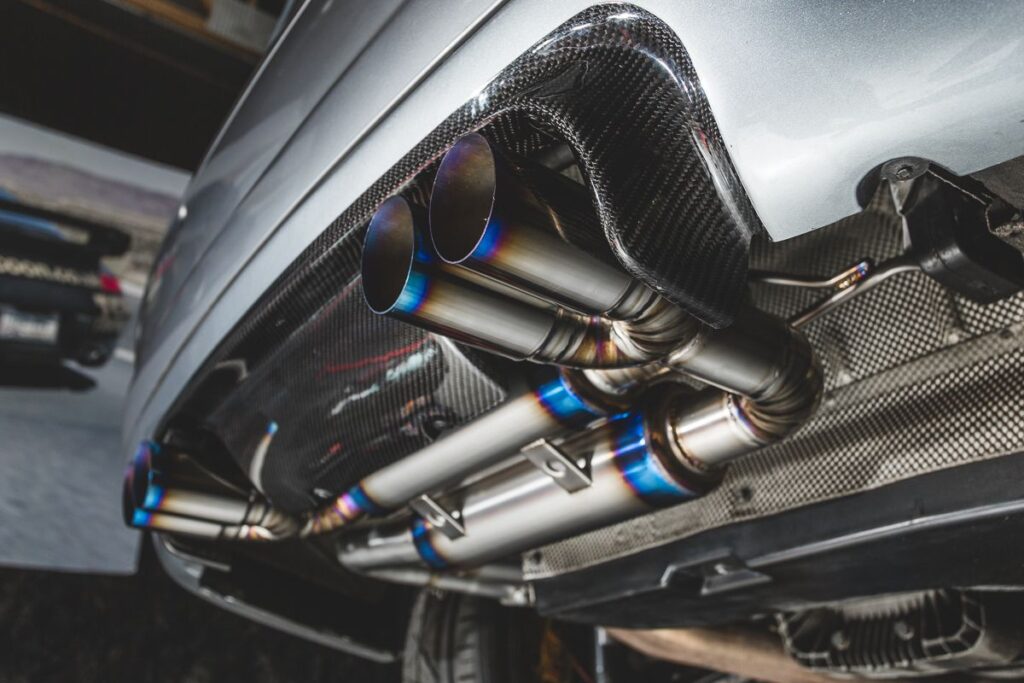In the United Kingdom, regulations governing vehicle modifications, particularly alterations to exhaust systems, are firmly in place to uphold road safety, preserve the environment, and ensure adherence to legal standards. It’s pivotal for car owners to grasp these regulations to sidestep penalties and maintain alignment with the established laws. Customising cars is a favoured means of personalising one’s vehicle and making a unique statement on the road. However, treading carefully within the legal boundaries is paramount. Several modifications are permissible within UK regulations, allowing car enthusiasts to enhance their vehicles while adhering to the guidelines.
For instance, installing an aftermarket exhaust system on an Audi A5 exhaust can be an appealing modification choice for enthusiasts seeking enhanced performance or a different aesthetic. Yet, ensuring that the chosen exhaust system complies with noise and emission regulations is crucial to avoid legal repercussions. Remember, while there’s room for personalisation and modification, it’s imperative to do so within the prescribed guidelines to enjoy the benefits without falling afoul of the law. Here is the guide on the laws on exhaust modifications in the UK
Regulations on Exhaust Modifications:
The allure of powerful, modified exhaust appeals to many, but the resulting noise can create discord among fellow road users. While exhaust modifications are permissible, they must adhere to strict noise limits set by law. For cars manufactured post-2016, the noise limit stands at 72 decibels, whereas older models have a threshold of 74 decibels. Vehicles undergo an Individual Vehicle Approval (IVA) to assess compliance with these regulations, enabling law enforcement to easily ascertain if a car violates these rules.
Individual Vehicle Approval (IVA):
The IVA serves as a pivotal testing process to ensure vehicles meet exhaust noise regulations. This assessment empowers authorities to conduct checks, allowing them to swiftly identify vehicles breaching the prescribed noise limits. The emphasis on noise control underscores the significance of maintaining a balance between personal vehicle modifications and environmental and societal considerations.
Large Bore Exhaust Systems:
Employing large bore exhausts to amplify a car’s sound, simulating a high-performance engine, is a common practice. However, navigating exhaust modification laws is intricate and contingent upon the vehicle’s classification. In essence, most modifications are acceptable as long as they don’t surpass the vehicle’s type approval noise limits. Non-compliance with these regulations can result in immediate penalties, including a £50 fine and a directive to remove the modified exhaust. Failure to adhere to these directives can lead to escalated penalties, underscoring the importance of understanding and abiding by the exhaust modification guidelines to avoid legal repercussions.
Nitrous Oxide Conversion:
While neither the Highway Code nor the MOT handbook explicitly forbids nitrous oxide usage, its improper implementation poses significant dangers. Introducing nitrous oxide into an engine augments acceleration but concurrently elevates cylinder pressure. This increased stress can potentially harm the engine, particularly if it’s unable to withstand the added pressure. Moreover, an imbalanced ratio of oxygen to fuel within the engine, coupled with heightened cylinder pressure, poses a serious risk. This imbalance might lead to severe engine damage or even an explosion, highlighting the critical need for proper implementation and understanding of the risks associated with nitrous oxide conversions.
Oversight and Compliance Monitoring:
Authorities and law enforcement agencies employ various methods, including roadside inspections and annual MOT tests, to ensure vehicles comply with established regulations. These measures serve as checkpoints to evaluate vehicles for adherence to exhaust system standards, noise levels, and emission thresholds. Roadside checks conducted intermittently, enable authorities to assess compliance on the spot, while the annual MOT tests provide a comprehensive examination of a vehicle’s overall roadworthiness, including its exhaust system’s compliance with noise and emission regulations. This monitoring framework reinforces the importance of ongoing compliance, encouraging vehicle owners to maintain their vehicles within the legal parameters to avoid penalties and ensure safer, environmentally responsible driving.
Aftermarket Exhaust Systems:
Any aftermarket exhaust systems introduced into vehicles must conform to specific standards, adhering strictly to noise and emission thresholds as defined by prevailing regulations. These systems undergo scrutiny to ensure they don’t exceed the prescribed limits, maintaining a balance between enhancing a vehicle’s performance or aesthetics and complying with legal noise and emission guidelines. The imposition of these standards on aftermarket exhaust systems serves to safeguard against excessive noise and harmful emissions, aligning with the broader objectives of maintaining environmental standards and minimising noise pollution on roadways.
Adhering to UK regulations regarding exhaust modifications is essential to ensure road safety, minimise environmental impact, and avoid legal repercussions. Understanding and abiding by these regulations not only ensures compliance but also contributes to a safer and cleaner environment for everyone on the road. Visit techkemp for more informative articles.

